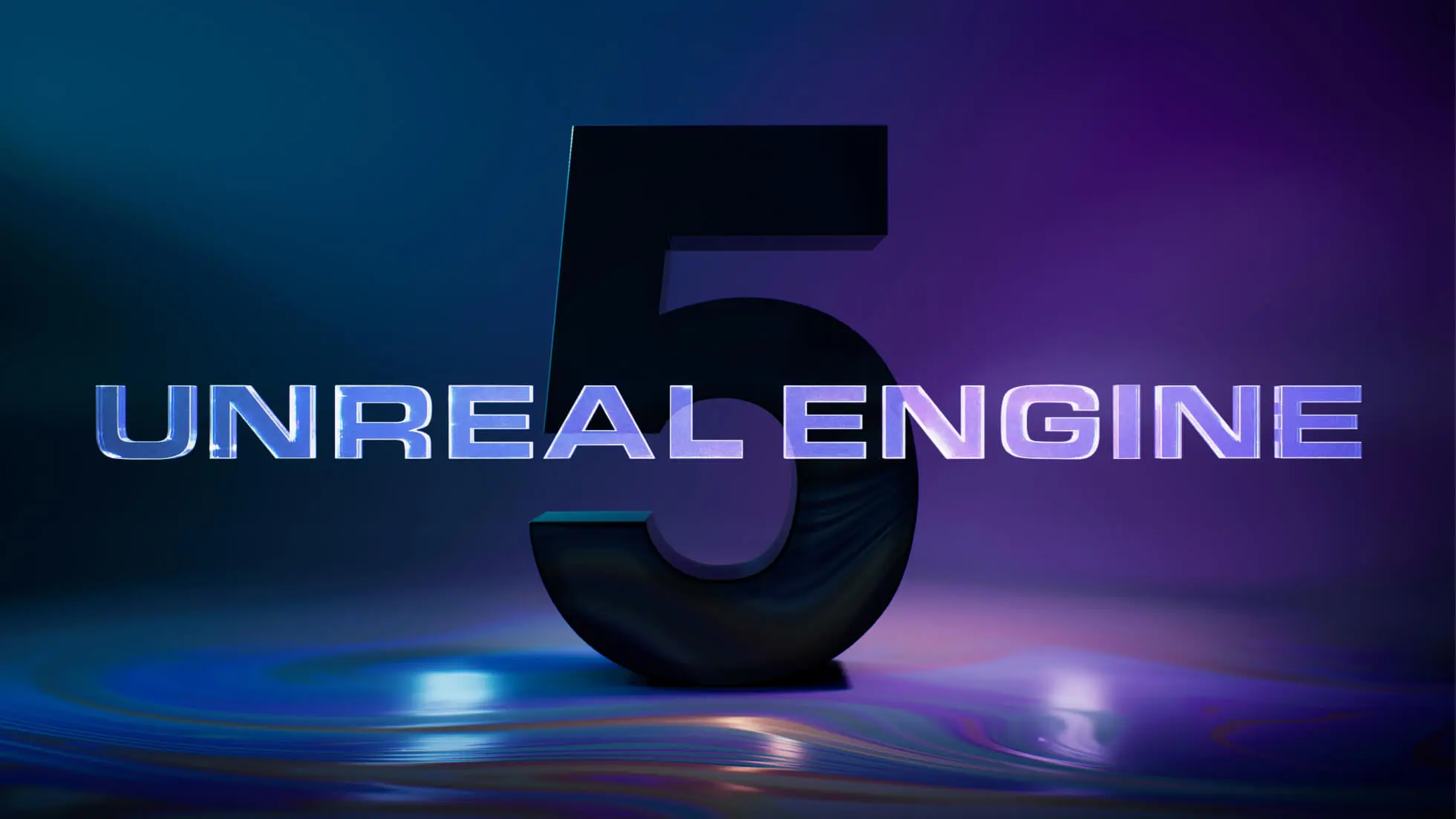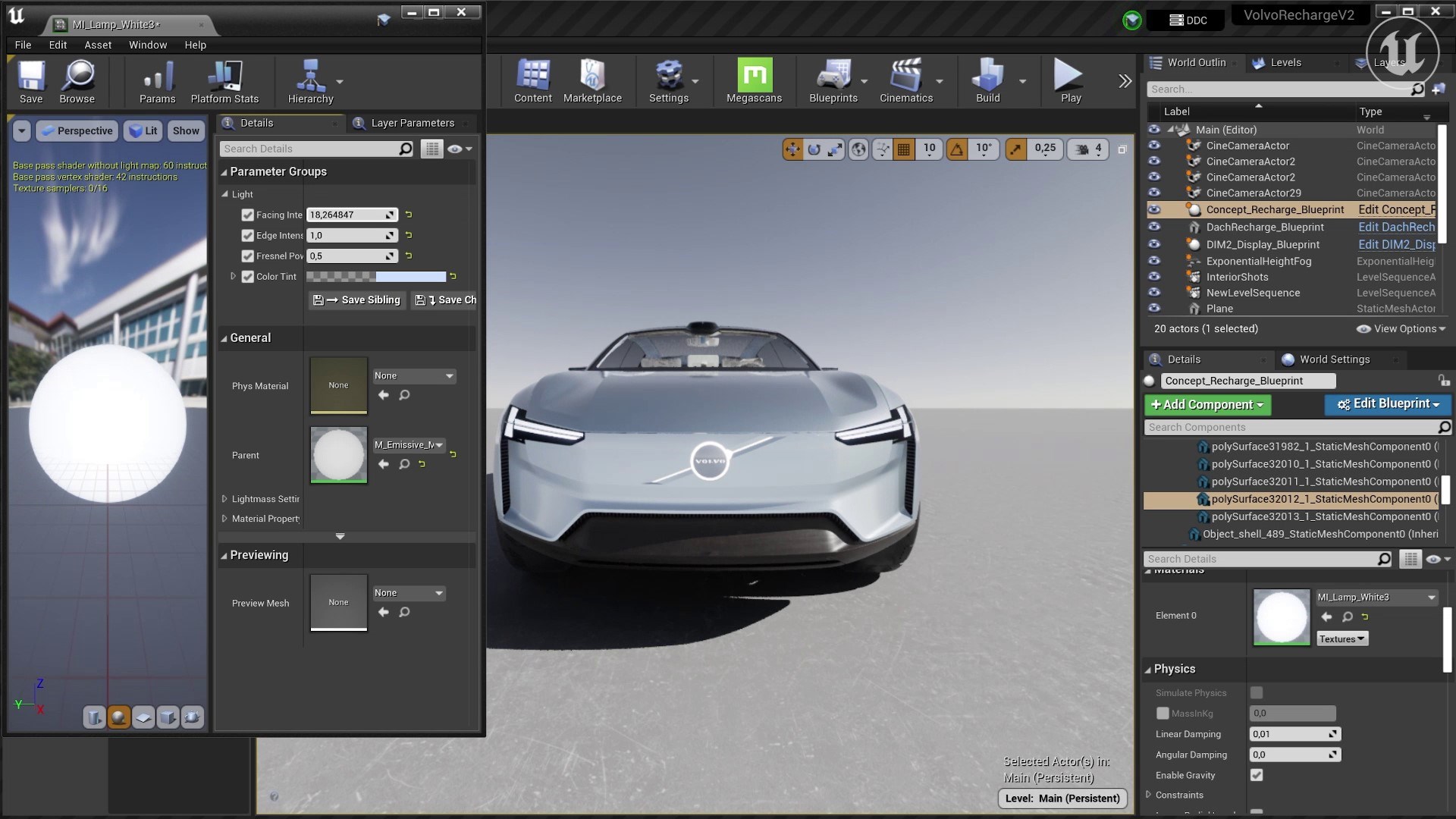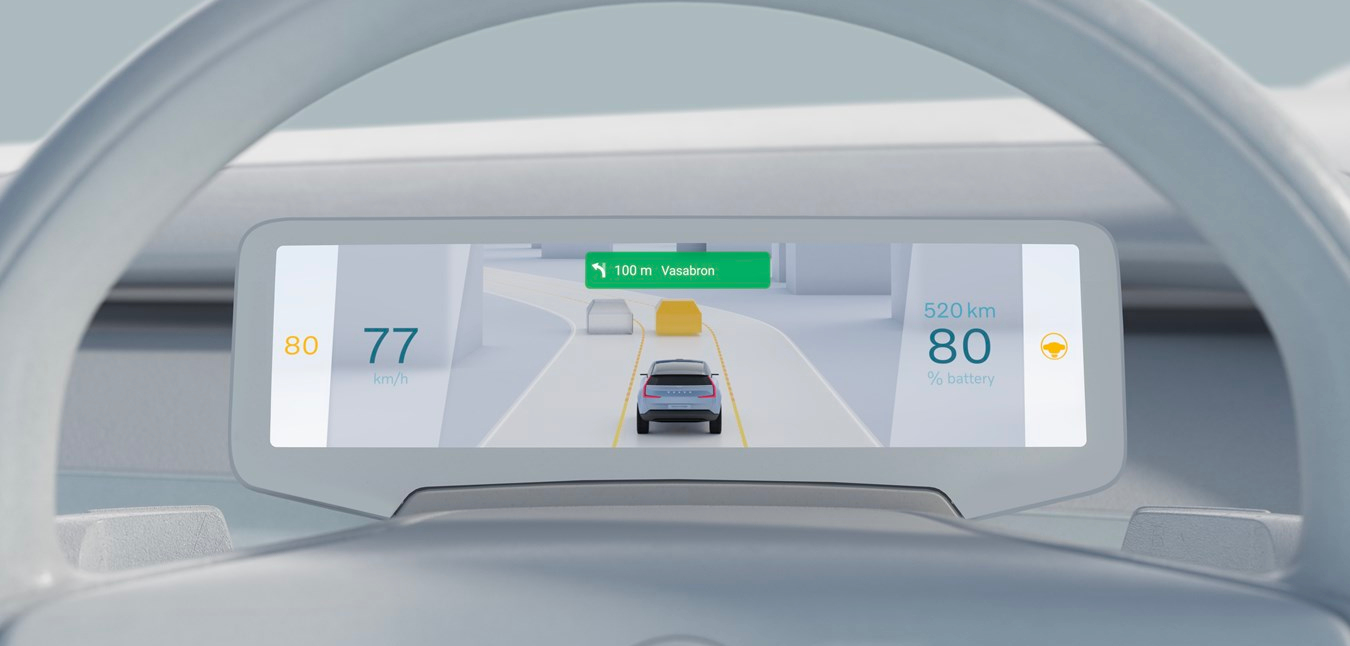On June 1st, Volvo announced its collaboration with the global leading game company, EPIC Games, to introduce photo-realistic visualization technology into the next-generation all-new flagship pure electric vehicle model. As a result, Volvo became the first European car manufacturer to use Unreal Engine to develop the Human-Machine Interface (HMI).
The two companies will work together to apply Epic’s game development engine, Unreal Engine, to the upcoming next-generation all-new flagship pure electric vehicle model from Volvo, providing realistic visual effects for the digital cockpit through visualization technology.
Volvo chose EPIC to support the development of the Human-Machine Interface (HMI) for the SPA2 car, focusing on the Driver Information Module (DIM) from V536 (said to be the pure electric version of XC90) onwards.
At the end of this article, you can find our interview with Thomas Stovicek, Head of User Experience and Interaction Design at Volvo Cars.
Introduction of EPIC UE5

Speaking of EPIC, I believe that most game enthusiasts have recently played many of the games available on the Epic Games Store. But let’s be rational. Unreal Engine 5 was officially released on May 13, 2020, and supports PC, PlayStation 5, and Xbox Series X/S. The very familiar “Black Myth: Wukong” is also developed on UE5 (manually urging for progress!!!).

And the technical features of EPIC on the latest Unreal Engine 5 can be summarized simply as “realistic” and “efficient.”
First, let’s look at “realistic.” Nanite and Lumen technologies are used here.
- Nanite allows high-detail photographic source materials to be imported into the game. As the name suggests, this is a “nanotechnology.”
In November 2019, Epic acquired Quixel, reportedly the world’s largest photogrammetry library up to 2019. This became a very important “digital asset” and an advantage of Unreal Engine 5. Developers can quickly create very realistic scenes through a database.
- Lumen is a fully dynamic global lighting solution, as the name suggests.
It can respond in real-time to changes in scenes and lighting, without requiring specialized ray tracing hardware.This system can render indirect mirror reflections and diffuse reflections that can bounce infinitely in grand and delicate scenes, from millimeters to kilometers, rendering them very realistic.
Artists and designers can use Lumen to create more dynamic scenes, such as changing the angle of daylight, turning on a flashlight, or opening a hole in the ceiling, and the system will adjust the indirect lighting accordingly. Lumen saves artists a lot of time, as there is no need to move light sources in the Unreal Editor and wait for the lighting map to be baked, nor do they need to edit the lighting map UV. Meanwhile, the lighting effect will be exactly the same as when the game is run on the host.

In summary, with the support of Nanite and Lumen, the Unreal Engine can not only efficiently and qualitatively implement game screen development, but also apply to special effects production such as animation and movies.
As for the “efficient” characteristic, I won’t go into details here. It mainly refers to all the development tools and toolchains accumulated by Unreal Engine since 1998.
Volvo’s Collaboration with EPIC

Volvo Cars first focused its R&D efforts on the Driver Information Module (DIM) which provides information and entertainment system functions for drivers. The new models will be unveiled by the end of this year, and will drive Volvo Cars towards its goal of becoming a pure electric luxury car company by 2030.
With the support of the Unreal Engine, the display screen of Volvo’s next-generation models will exhibit clearer image rendering, richer colors, and brand new 3D animation effects, providing users with high-definition picture resolution. This is only the first step for Volvo’s developers in optimizing image capabilities.
On Volvo’s next-generation models, the Unreal Engine will combine with the high-performance computing power of the third-generation Qualcomm Snapdragon digital cockpit platform, enabling the speed of the infotainment system to increase by more than double, and the speed of image generation and processing in the cockpit to improve by 10 times.
Volvo Cars Chief Product Officer Henrik Green said:
To provide better user services and promote safer, personalized driving experiences, we need rich, immersive, and responsive in-car visual effects. Applying the Unreal Engine in the product development process helps us achieve this goal and provides users with a more enjoyable in-car experience.EPIC Games’ Heiko Wenczel, Director of Human-Machine Interfaces for the Unreal Engine Automotive Division, stated:
Bringing real-time, interactive, high-resolution images into the digital cockpit is like opening a new door for vehicle occupants, greatly expanding the ways users receive information and interact with entertainment. Volvo’s talented design and product development team saw this opportunity and will continue to launch more exciting new features for consumers with the help of the Unreal Engine.
Of course, Volvo’s next-generation electric vehicles will still be built on the Android Automotive OS.
Q&A Section

Interviewee: Thomas Stovicek, Head of User Experience and Interaction Design at Volvo Car Corporation
My question is a bit ahead of its time. As the collaboration between EPIC and Volvo has just begun, there is still great potential for future imaginations, but the current scope of cooperation is still in the field of HMI.
Transcription Notes:
42 Garage:
Many game contents supported by Unreal Engine are AR and VR. In the future, will you consider making relevant content inside the car? Will you later use EPIC’s Unreal Engine to create digital twin design models to validate and train Volvo’s autonomous driving algorithm? During the collaboration with EPIC, did Volvo see the limitations of traditional automotive HMI, and what breakthroughs or new interactive methods are being introduced?
TS:
We are continuously exploring AR and VR content creation and hope to use technology like the Unreal Engine to bring new features and better personalized, safer driving experiences to Volvo customers.
In addition, technologies like the Unreal Engine can help us achieve unprecedented goals, such as creating 3D models more quickly and having more responsive visualizations. At present, there is no specific information to reveal regarding our exploration of VR and AR content creation for the future.
From the beginning of our collaboration with EPIC, we knew that this technology can break through and surpass the limitations we faced in the past, such as those presented by previous technologies in 3D modeling or rapid information rendering, and in quickly realizing visualizations. Our collaboration with EPIC has resulted in new development tools that allow us to create 3D models quickly and enable more responsive, immersive visual effects within the car. This has enabled much faster technological iteration between our engineers and designers.To answer your questions:
Q2: Regarding the advantages of using the Unreal Engine in Human-Machine Interface (HMI) development, we believe it provides unprecedented capabilities and features for Volvo, such as sensor systems both inside and outside the vehicle, various connected car functions, and electric drivetrain trends and processes. These different technologies will be provided to the driver in various information structures. As a new technology, we will use different layering and architecture to restructure this information for the user.
Q2: As for the second question of when this technology will be applied to mass-produced models, our plan is to further apply it to the next generation of Volvo electric vehicles, but we currently do not have a specific timeline.
Q3: Our collaboration with EPIC Games will be focused on the in-vehicle entertainment system, but it does not exclude the possibility of using their technology for the development of the entire vehicle system. We aim to provide optimized and improved driving experiences for the driver through the improved HMI. In the process of electrification, many automakers have been focused on 3D display effects for the screen display, but there has been no real revolutionary change in terms of user experience. We hope to address this challenge by providing new ideas and solutions through our collaboration with EPIC Games.As a collaboration partner of EPIC and BMW Group, we are not sure about the main ways and methods of their cooperation. However, during our collaboration with EPIC Games, we mainly focus on providing new functions for various Volvo car models and can provide sensors and other entertainment information to car owners in a better and more efficient manner. We will provide drivers with more abundant information. In addition, EPIC’s Unreal Engine technology is an important driving force for achieving the above goals. We will further optimize the information and provide drivers with simple, safer and more personalized information flow, ensuring that they receive all these information without distraction while focusing on driving. Our main goal is to allow drivers to concentrate on driving while also being able to easily receive all of this information. This is a revolutionary change in the driving experience and solutions provided by our designers and developers.
As we further promote autonomous driving technology, we will also provide drivers with more abundant information and provide other car passengers with better and more convenient entertainment information.
To add to the topic of revolutionary experiences, the tools provided by EPIC for all developers and designers are very fast and can be quickly iterated and are a revolutionary experience.
Q4:
When did the collaboration between the two parties begin, and in what circumstances did Volvo choose to collaborate with Unreal Engine or EPIC Games? How was this decision made? In China, we see some industry examples of game developers entering the automotive industry, such as VR simulators or personalized car purchase systems based on AR, such as virtual concept cockpits or primary digital twin workshops. I would like to ask what Volvo’s prospects for game developers entering the automotive industry are? Are there any urgent difficulties that need to be overcome?
TS:
Firstly, EPIC can further supplement us with many technical aspects, such as richer experience and information on the human-machine interface. Meanwhile, EPIC also has its own development tools to provide designers and developers, which can enable them to iterate very quickly and work more closely together.
We also see many opportunities and good ideas for further exploration between the two parties in the future, and to provide customers with better solutions. The challenges faced by games or game technology are very similar to those in the automotive field, such as the need for players to have a rich and responsive immersive experience and environment to play better in visual video games. In the automotive field, we have the same requirements, such as the human-machine interface which can use this technology to achieve better interaction between car owners and car passengers.“`markdown
Apart from this, we need to ensure that drivers are provided with better information throughout the entire automotive process, helping them make better decisions and ensuring a safer driving environment. We are also exploring more collaborations with EPIC to develop the right technology for our customers and consumers at the right stage, to meet their various customer experience needs. For example, 3D imaging is a very important set of tools that we need throughout the driving process, which can give drivers a better experience. At the same time, we will further explore more content related to AR and VR in the future.
Returning to the topic of collaboration, EPIC and Volvo have been in close discussions for the past few years. Our colleagues have actively explored various topics with EPIC. Recently, we believe that cooperation between the two parties is crucial. We believe that applying EPIC’s Unreal Engine technology to Volvo’s next generation of electric vehicles, and further integrating EPIC’s development tools and Volvo’s customer needs in the design and development process, can provide customers with the best and most comprehensive experience.
Q5:
We have noticed that Volvo has made many non-traditional supply chain decisions in its production process, such as the cooperation with EPIC Games. I would like to know why Volvo has made such decisions in recent years?
TS:
For many years, Volvo has been trying to find the right technology partners to further develop our models and give them more functions and capabilities. Like the non-traditional suppliers you mentioned, EPIC Games can help us enrich the customer experience even better. EPIC’s technologies and tools in product development and customer experience pain points can meet these needs. EPIC is also an industry leader in providing rich, responsive, and immersive in-car visual effects. Therefore, we can fully integrate their realistic visual effects technology with the design, automotive knowledge, and functions of the entire automotive product to further optimize the customer experience.
“`
This article is a translation by ChatGPT of a Chinese report from 42HOW. If you have any questions about it, please email bd@42how.com.
